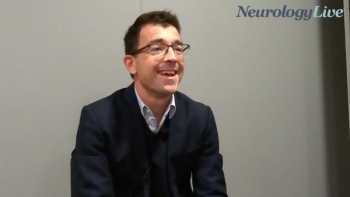
Brain Health Assessment Challenges in MS
Jacqueline Nicholas, MD, provides insight into challenges inherent to the assessment of brain health in patients with multiple sclerosis [MS].
Episodes in this series

Stephen Krieger, MD: Dr Nicholas, how about you? You’ve heard here overall, a sense of atrophy, based upon third ventricular width. Do you have a preferred measure or way that you look at atrophy in your practice?
Jacqueline Nicholas, MD: I think looking at atrophy has been such a challenge. Certainly, when we see somebody initially, looking at T1 hypointensities is one component that I take a peek at, and certainly third ventricular width is a nonscientific way of gauging it.
Stephen Krieger, MD: It’s the quick and dirty way.
Jacqueline Nicholas, MD: I know, when I was first learning about MS, one of my mentors said, “You know, at a young age you should barely be able to slip a sheet of paper through that third ventricle.” And then seeing the width that some of these patients had was certainly eye-opening. But I would say that a bigger challenge is assessing that year-to-year or even over a couple of years. There are a lot of different ways to measure brain volume and have certainly tried to implement some of those in our practice, but I found a variation just based on time of day, if they were hydrated or not for the scan, which is obviously a challenge in MS when you have bladder issues. I think in clinical practices outside of research, it has been something hard to be able to home in, but I’m certainly hoping that we have better ways to do that across the board over time.
Transcript Edited for Clarity
Newsletter
Keep your finger on the pulse of neurology—subscribe to NeurologyLive for expert interviews, new data, and breakthrough treatment updates.


































